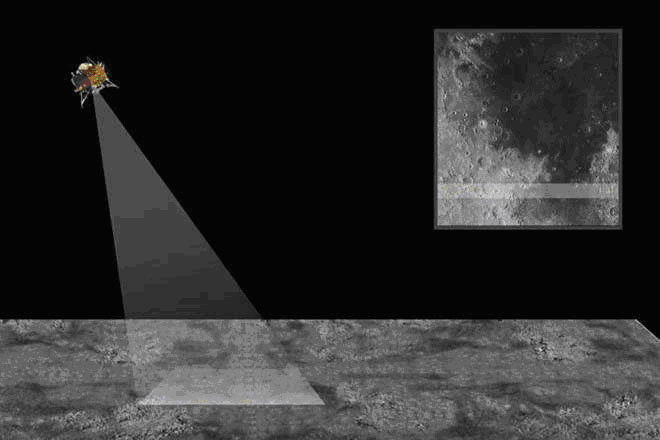Chandrayaan 2: Hope For Vikram Lander? ISRO Says It Has Not Given Up Yet
2 October 2019
Even after almost a month, Indian Space Research Organisation (ISRO) has not given up hope on its Vikram lander module of the Chandrayaan-2 spacecraft. ISRO had made all possible efforts to establish a communication link with Vikram but did not succeed. (Image: ISRO)
The lander which missed to make a soft landing on the lunar surface and lost communication with ISRO in the wee hours of September 7 has been lying on the Lunar surface since then. A PTI report which cited senior officials suggested that ISRO has not given up efforts to bring the Vikram lander of Chandrayaan-2 back to life.
Earlier on September 7, ISRO had informed through its official channels that the ground stations have lost communication with Vikram (Which had rover Praygan housed inside it), a few minutes before the scheduled soft-landing on the Lunar surface.
It is since then, that ISRO had been making all possible efforts to establish a communication link with Vikram. Though the Bengaluru-headquartered space agency, after not being successful to spot Vikram till nightfall on the Moon in the landing region of its probe, has already suspended operations 10-days ago. Experts had earlier said that it will be nearly impossible to locate the Vikram lander in the lunar night. Infact, NASA had released high-resolution images of the region but was unable to spot the lander module of Chandrayaan 2. The American Space agency has informed that the lunar dusk led to unfavourable lighting situation in the region making it difficult for their LRO to spot the Vikram.
While talking about Vikram lander on Tuesday, the Chairman of ISRO, K Sivan told PTI that locating Vikram is not possible now as it is night time in that region of the Moon. He further added to his statement that ISRO might start looking for Vikram once the lunar night ends.
It is to be noted that ISRO had earlier informed that the mission life of both Vikram lander and Pragyan rover will be 1-lunar Day (equivalent to 14-earth days). And, the span has already ended on September 21, which was then followed by lunar night.
Though, K Sivan has said almost 98 per cent objectives of the Chandrayaan-2 have been achieved. It is to be noted that, ISRO’s Chandrayaan-2 was a highly complex mission, which was set to explore the totally uncharted south polar region of the Moon with the help of its three modules. The Orbiter module which was the main module of the mission has been precisely placed in the Moon’s orbit.
The PTI report citing experts suggested that regaining link with the lander now appears extremely difficult. PTI, maintaining anonymity, cited an ISRO official saying that he thought that finding link with Vikram lander after so many days is going to be extremely difficult but there is nothing wrong in trying. When asked about whether the Vikram lander will be able to withstand the severe cold conditions of the lunar night, the aforementioned ISRO official said that it is not only cold which is worrying but also the impact shock that the lander would have received upon hard landing. The shock generated by hard landing can damage many components of the Lander and that way the chances of Vikram’s survival is highly doubtful. Also, the orientation of the communication antenna and the direction which it facing makes it really difficult to predict anything the ISRO official told the news agency.
K Sivan has told PTI that the orbiter is fine. Also, ISRO on September 7 has informed through official channels that the orbiter module of Chandrayaan-2 has already been placed in its intended orbit around the Moon. The precise placement of the Orbiter shall enrich our understanding of the Moon’s evolution and mapping of the minerals and water molecules in the Polar Regions, using the eight scientific instruments on board it, ISRO had informed.
According to the information available on the ISRO’s website, it is evident that the camera onboard the orbiter is the highest resolution camera (0.3 metres) used in any lunar mission so far. The Indian space agency, ISRO also said that the Orbiter camera shall provide high-resolution images of the Moon which will be immensely useful to the global scientific community.
The space agency informed that the precise launch of Chandrayaan 2 and efficient mission management and desired placement of the Chandrayaan 2 Orbiter has ensured a long life of almost seven years instead of the planned one year.
PTI has earlier reported that ISRO had constituted a national level committee to analyse the cause of the communication loss with the Vikram lander. The committee consists of academics and agency experts.
Courtesy: FE Online

